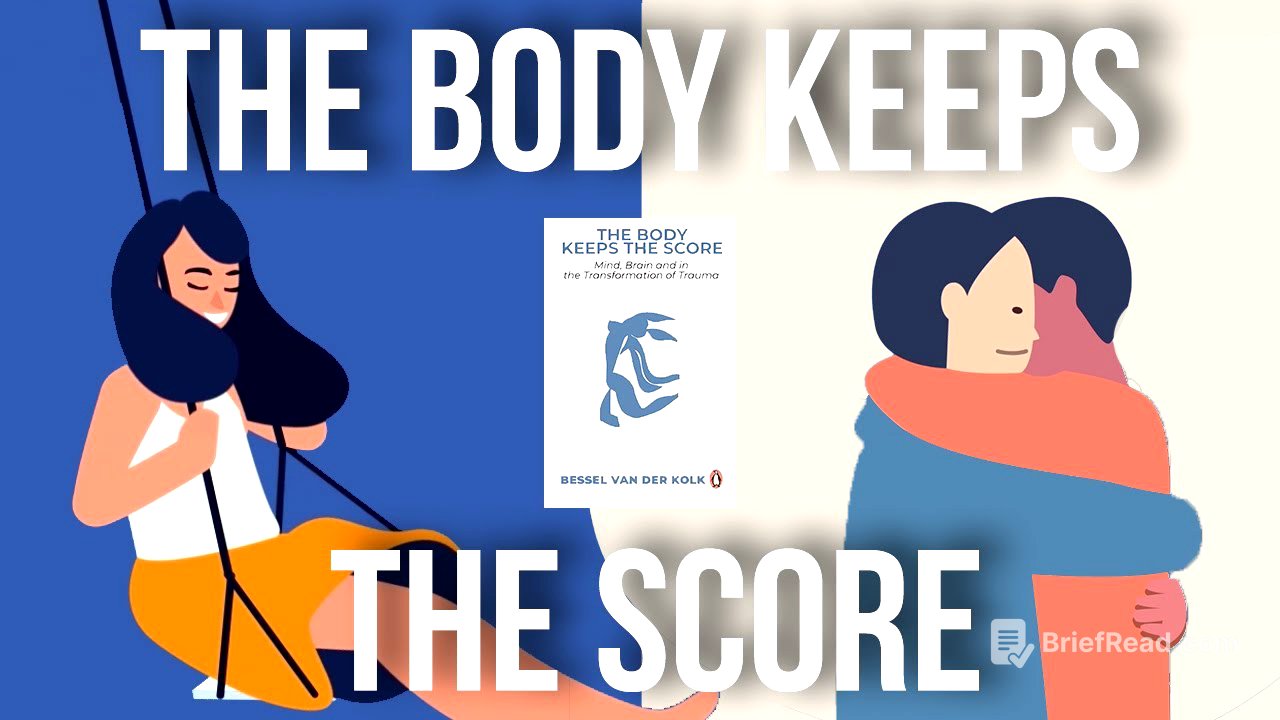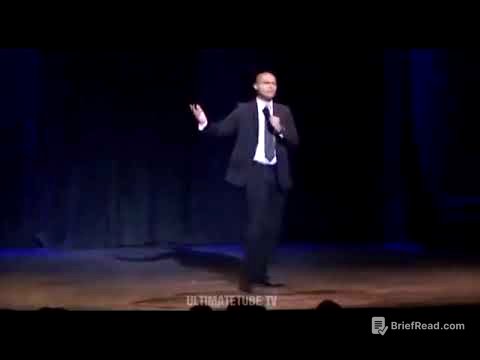TLDR;
This video summarizes the key ideas from Bessel van der Kolk's book, "The Body Keeps the Score," emphasizing the connection between emotional suffering and physical manifestations. It highlights how trauma and emotional experiences are stored in the body, influencing posture, breathing, and physical responses. The video suggests therapeutic approaches that incorporate physical activities and sensory experiences to address emotional healing, particularly for those who experienced neglect or trauma in childhood.
- Emotional suffering manifests physically, influencing posture, breathing, and physical responses.
- Trauma can lead to either hyper-alertness or numbness in the body.
- Therapeutic approaches should incorporate physical activities and sensory experiences to address emotional healing.
Introduction to "The Body Keeps the Score" [0:04]
Bessel van der Kolk's book "The Body Keeps the Score" emphasizes that emotional suffering is not solely a mental phenomenon but also manifests physically. Symptoms appear in posture, breathing, sleep patterns, digestion, and attitudes toward exercise. Taking the body seriously allows new approaches for diagnosing and treating emotional issues.
The Body as a Score Sheet [0:56]
Therapists should view the body as a record of emotional experiences. For example, individuals who grew up with an angry parent might suppress their own anger, becoming meek and overly compliant. Physically, they may become still and frozen, fearing that expressing vitality could provoke retaliation. This can manifest as stiff posture or resistance to physical activities like running, stemming from a fear of their own strength.
Therapeutic Approaches Beyond Talk Therapy [2:03]
Van der Kolk recommends therapies beyond traditional talk therapy, such as kickboxing, karate, competitive running, or swimming, to help individuals reconnect with their strength. Rhythmically chanting or drumming can also release pent-up longings for self-assertion. Traumatized individuals often have bodies that are either hyper-alert or numb, and treatment aims to find a balance between these extremes.
Sensory Integration and Reconnecting with the Body [2:50]
Van der Kolk's team established a sensory integration clinic, an indoor playground for both children and adults, to help individuals reconnect with bodies that were not properly touched or cared for in childhood. Activities include diving onto foam mats, rolling in a ball pool, swinging, and balancing on a beam. This approach aims to correct long-standing alienation from the body, particularly for those neglected by emotionally stunted parents.
Rebuilding Trust in One's Body [3:51]
Individuals who were neglected may feel disconnected from their bodies, experiencing discomfort with touch or viewing their bodies negatively. Van der Kolk suggests therapeutically informed massage to rebuild trust in one's skin and limbs. The goal is to provide experiences that contradict the helplessness, rage, or collapse resulting from trauma.
Healing Through Body Awareness and Physical Expression [4:36]
The body's physical symptoms can serve as a source of memory and evidence when the mind is blocked. By observing posture, breathing, and reactions to touch during therapy, individuals can begin to remember past traumas. Healing can occur through wise counsel and comforting words, as well as through physical activities like dancing, swinging, chanting, and embracing.








